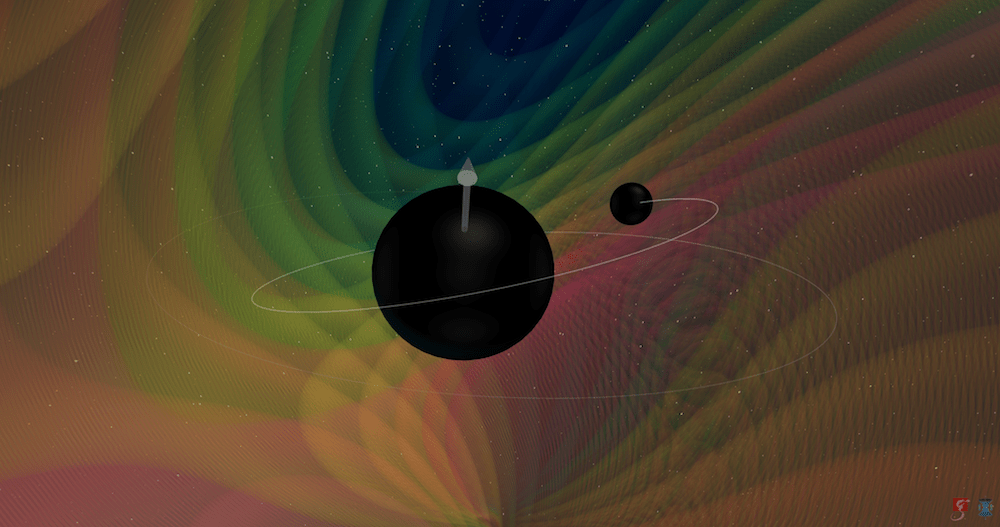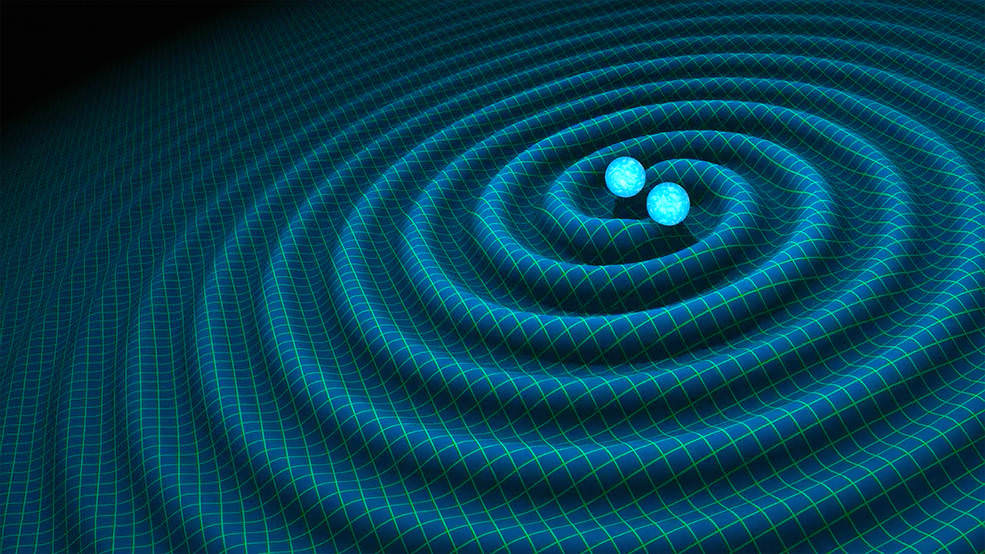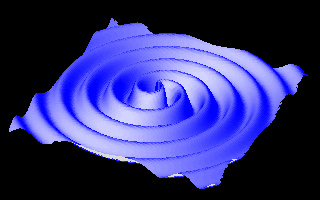[/caption]Colliding neutron stars and black holes, supernova events, rotating neutron stars and other cataclysmic cosmic events… Einstein predicted they would all have something in common – oscillations in the fabric of space-time. This summer European scientists have joined forces to prove Einstein was right and capture evidence of the existence of gravitational waves.
Europe’s two ground-based gravitational wave detectors GEO600 (a German/UK collaboration) and Virgo (a collaboration between Italy, France, the Netherlands, Poland and Hungary) are underway with a joint observation program which will continue over the summer, ending in September 2011. The detectors consist of a pair of joined arms placed in a horizontal L-shaped configuration. Laser beams are then passed down the arms. Suspended under vacuum at the ends of the arms is a mirror which returns the beam to a central photodetector. The detectors work by measuring tiny changes (less than the diameter of a proton), caused by a passing gravitational wave, in the lengths (hundreds or thousands of meters). The periodic stretching and shrinking of the arms is then recorded as interference patterns.
Much like our human ears are able to distinguish the direction of sound from being spaced apart, so having interferometers placed at different locations benefits the chances of picking up a gravitational wave signal. By placing receivers at a distance, this also helps to eliminate the chances of picking up a mimicking terrestrial signal, since it would be unlikely for it to have the same characteristics at two locations while a genuine signal would remain the same.
“If you compare GEO600 and Virgo, you can see that both detectors have similar sensitivities at high frequencies, at around 600Hz and above”, says Dr Hartmut Grote, a scientist at the Max Planck Institute for Gravitational Physics (Albert Einstein Institute/AEI) and the Leibniz University in Hannover, Germany. “That makes it very interesting for us to search this band for possible gravitational waves associated with supernovae or gamma-ray bursts that are observed with conventional telescopes.”
Of all phenomena, gamma-ray bursts are expected to be one of the strongest sources of gravitational waves. As the most luminous transient event in the known Universe, this collapse of a supermassive star core into a neutron star or black hole may be the most perfect starting point for the search. As of now, the frequencies will depend on the mass and may extend up to the kHz band. But don’t get too excited, because the nature of gravitational wave signals is weak and chances of picking up on it is low. However, thanks to Virgo’s excellent sensitivity at low frequencies (below 100 Hz), it is a prime candidate for gathering signals from isolated pulsars where the gravitational wave signal frequency should be at around 22Hz.
And we’ll be listening for the results…
Original Story Source: Albert Einstein Institute News.



